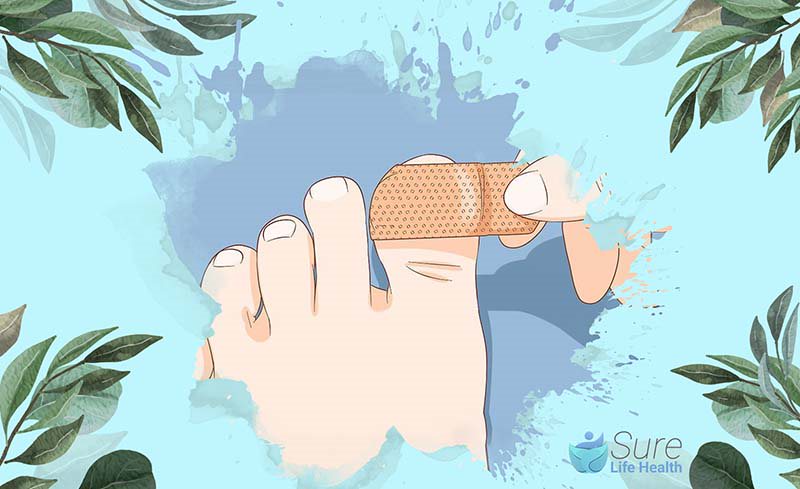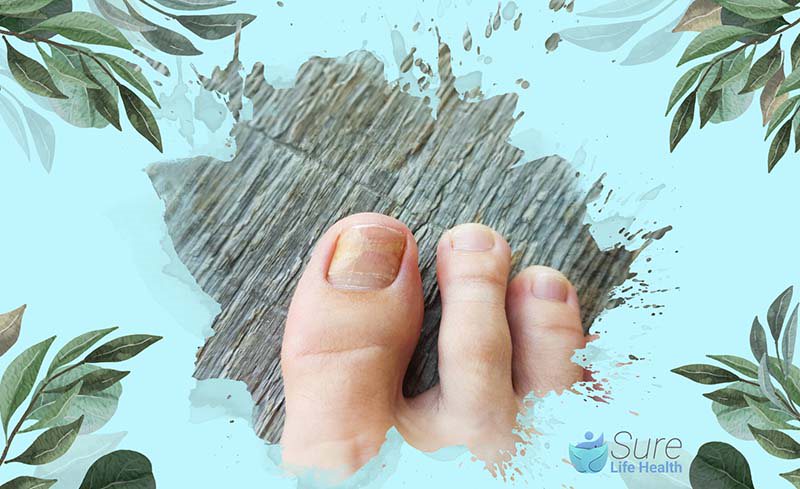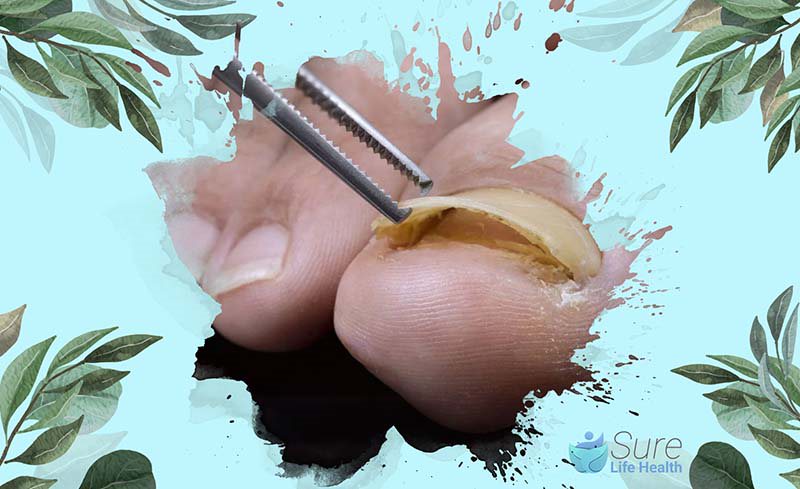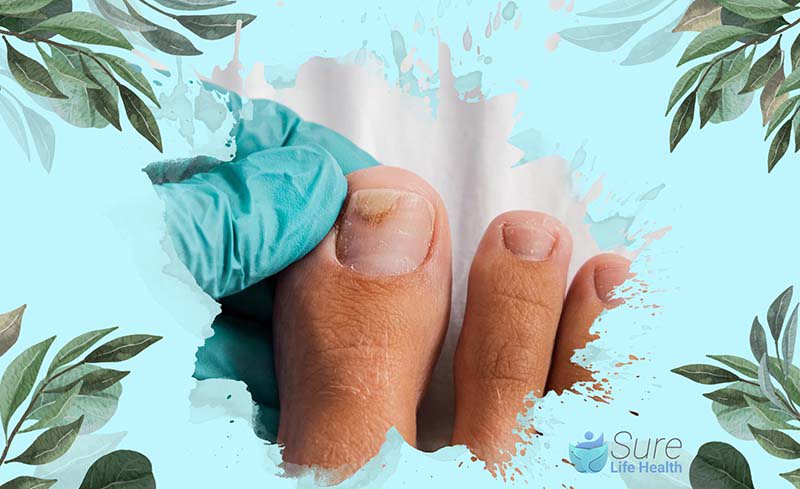You might not think much about toenails until you go through the inconvenience of losing one. These tiny parts actually play a big role in protecting the tips of our fingers and toes. So, when a toenail goes missing, it can make everyday activities like walking or jogging pretty uncomfortable for a while.
Unfortunately, toenails grow back much more slowly than fingernails. While fingernails typically grow about 3.47mm per month, toenails grow at a slower pace of about 1.62mm per month—taking 2-3 times longer to regrow. Additionally, the rate at which a toenail grows back can vary depending on the reason it was lost.
How Long Does It Take For a Big Toe Nail to Grow Back
Both toenails and fingernails have a leisurely pace when it comes to regrowth, but toenails are especially sluggish.
On average, it can take up to 18 months for a toenail to fully regenerate, while a fingernail typically grows back in about 4 to 6 months.
The exact reason why fingernails grow faster hasn’t been completely understood. One theory suggests that fingers receive more blood flow due to frequent use, which could explain the quicker growth rate. Despite these general timelines, the rate at which nails grow back can vary depending on individual circumstances.

Factors Affecting Toenail Regrowth
After undergoing nail removal, you’re likely eager to know how to speed up the regrowth process of your toenail.
Several factors can influence the speed at which your toenail grows back, including the overall health and resilience of the nail itself, levels of collagen and keratin in your body, and the sufficient intake of specific vitamins. Surprisingly, even the climate can have an impact on how quickly your nail will regenerate.
Collagen
Collagen, a crucial protein for the structure of our hair, skin, and nails, diminishes as we age, potentially leading to brittle, slow-growing nails. While some collagen can be sourced from food, only supplemental collagen has been linked to increased levels in the body, thereby boosting nail strength and growth rate.
It’s worth noting that collagen production begins to decline as early as our 30s. Lifestyle choices such as smoking and poor dietary habits can speed up this decline.
Keratin
Our nails, along with our hair and skin, are composed of cells made from the fibrous protein keratin, which also declines with age. Applying keratin to nails or taking oral keratin supplements may enhance nail strength and promote faster toenail growth, although further research is required to confirm these effects.
Additionally, a diet lacking in sufficient protein or certain vitamins like biotin can negatively impact keratin levels.
Biotin
Biotin, a B vitamin crucial for protein production needed for nail growth, has received support from various studies that suggest it is effective in promoting strong and healthy nails.
However, individuals with lower levels of biotin in their diet may experience better results from biotin supplements. While biotin deficiency is uncommon, further research is needed to fully understand the impact of biotin supplementation on nail growth and strength.
What Are the Stages of Nail Regrowth?
Nail growth originates from the matrix, situated beneath the skin, serving as the root of your nail.
In the matrix, new cells continuously develop. As these fresh cells proliferate, older cells gradually ascend and emerge through the skin’s surface. Subsequently, the cells at the surface undergo a process of death and hardening, ultimately transforming into the nails we see.

Instructions on How to Care for Lost Nails
Here’s a more systematic approach to caring for a damaged nail and speeding up the healing process:
- Apply a Cold Compress: To reduce swelling and inflammation, wrap a cloth around an ice pack and gently place it on the affected area for up to 20 minutes.
- Elevate the Injured Nail: Keep the injured nail elevated to decrease blood flow to the area, helping to reduce swelling and bruising.
- Take Biotin Supplements: Biotin is effective in promoting cell growth and aiding in the metabolism of protein-building amino acids, which can contribute to faster nail growth.
- Keep the Wound Dry and Covered: The skin underneath your toenail is sensitive, so it’s crucial to keep it clean and dry. Cleanse the nail bed daily and cover it with a bandage, changing the bandage daily to ensure cleanliness.
- Apply Antibiotic Ointment: To prevent infection and promote healing, apply antibiotic ointment to the damaged nail.
- Manage a Partially Detached Nail: If the nail hasn’t detached yet, try to keep it in place until it naturally falls off, providing extra protection to the delicate nail bed underneath.
Reasons Why Your Toenails May Fall Out
- Injury: Simple foot injuries, such as those from car accidents, sports activities, or dropping heavy objects on your foot, can lead to toenail loss.
- Fungi: Fungal infections can develop between the nail bed and toenail, eventually causing the toenail to fall off. Signs of a fungal toenail infection include thicker toenails, white or yellowish-brown discoloration, dryness, brittleness, foul odor, and abnormal nail shape.
- Psoriasis: Psoriasis, an autoimmune condition marked by an overproduction of skin cells, can also impact toenails. Although many instances of nail psoriasis are mild and cause few problems, the accumulation of skin cells in the nail bed can sometimes lead to toenail loss. Signs of psoriasis on toenails include pitting, thickening, abnormal nail shape, yellow or brown discoloration, and a chalky accumulation beneath the nail.

Can the Weather Affect Toenail Growth?
Yes, the temperature and environmental conditions can indeed influence the rate of toenail growth.
In colder environments, toenail growth typically slows down, likely due to reduced circulation. Conversely, nails have a tendency to regenerate more rapidly during warmer months.
When Do You Need to See a Doctor?
While nail trauma may not always necessitate immediate medical attention, certain conditions warrant a visit to the doctor.
For hard-to-treat nail fungus, nail psoriasis, or symptoms suggestive of an infection, seeking medical advice is crucial. Symptoms indicating a potential infection include persistent pain, discoloration, thickening of the nail, oozing, or changes in nail shape. If you experience any of these symptoms, it’s advisable to consult with a doctor for proper evaluation and treatment.

Conclusion
Toenails can fall off due to various reasons, whether it’s from injury trauma or a toenail infection leading to a damaged nail bed or detached nail.
Experiencing the loss of a toenail can be uncomfortable and sometimes painful. It’s important to note that toenails take significantly longer to regrow compared to fingernails. However, by adhering to good hygiene practices, you can facilitate proper toenail regrowth. Additionally, incorporating a collagen supplement into your routine, maintaining a nutrient-rich diet, and practicing proper grooming habits can contribute to enhanced nail growth.
If you have any concerns or questions regarding the loss of your toenail, seeking advice from a podiatrist or healthcare practitioner is recommended for personalized guidance and treatment options.
Be sure to explore more insightful blogs from Sure Life Health, where we continue to shed light on the latest trends and breakthroughs in health and wellness.
Professor Gaye Cunnane, PhD, MB, FRCPI
As the Director of Health and Wellbeing at RCPI, Professor Gaye Cunnane is at the helm of initiatives aimed at enhancing the health and well-being of RCPI Trainers and Trainees. Her role extends beyond administration; she is also a respected clinical professor of rheumatology and a consultant rheumatologist at Trinity College Dublin (TCD) and St James’s Hospital. Prof. Cunnane’s medical journey began at TCD, where she graduated from medical school, and her path has been marked by both clinical and academic excellence.
After completing her basic clinical training in medicine, she embarked on PhD studies at University College Dublin and St Vincent’s University Hospital. Her research during this period was focused on prognostic markers in early inflammatory arthritis, a project that saw her collaborating with esteemed universities across Europe, including in Switzerland, The Netherlands, the UK, and Sweden.
Prof. Cunnane’s career took her to the University of California, San Francisco, where she spent three years delving into research on new treatments for lupus. Her academic prowess led her to the University of Leeds in 2001 as a senior lecturer, before returning to Ireland in 2003 to assume her current roles. She has also served as the National Specialty Director for Rheumatology training in Ireland, Programme Director for Basic Specialist Training with RCPI, and as a past President of the Irish Society for Rheumatology.
PUBLISHED ARTICLES
“Rheumatic disease differentiation using immunoglobulin G sugar printing by high-density electrophoresis”: Published in The Journal of Rheumatology, this study reflects her in-depth investigation into rheumatic diseases.
“Benefits of exercise in patients with rheumatoid arthritis: a randomized controlled trial”: This research work, highlighting the positive impact of exercise on rheumatoid arthritis, underscores Prof. Cunnane’s dedication to practical, patient-centered research.
Additionally, Prof. Cunnane has made notable contributions to the Annals of the Rheumatic Diseases, discussing early referral, diagnosis, and treatment of rheumatoid arthritis. She has also been involved in a study on the NCBI platform investigating exercise benefits in rheumatoid arthritis patients.
Professor Gaye Cunnane’s career is a testament to her commitment to improving patient outcomes in rheumatology through rigorous research, clinical excellence, and dedicated teaching. Her work continues to influence the field of rheumatology, both in Ireland and internationally.

